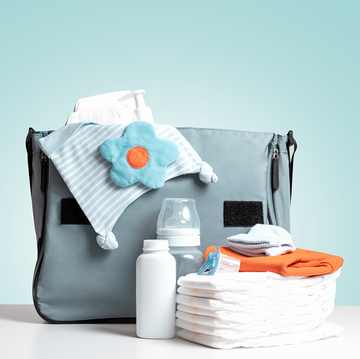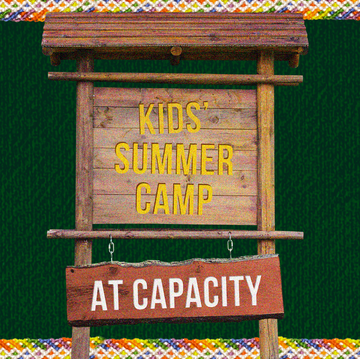As the novel coronavirus continues to spread around the world, thousands of schools have closed in an effort to slow down the disease, leaving many parents grappling with this question: In the face of so much uncertainty, how can we ensure that our children’s education continues?
If you’re feeling anxious and overwhelmed as you wait to hear when schools will reopen, know that you are not alone as a new homeschooling parent — and that there are excellent options for keeping your child learning.
First, remember that you don’t need to recreate your child’s school schedule to be successful at home.
Many schools have distance learning programs in place, and others are in the process of launching them now, so your child will likely have academic coursework assigned by teachers. Help children understand the goals and expectations for their grade level, but recognize that learning at home will look different than a traditional six- or seven-hour school day that covers several subjects. With fewer interruptions and less transition time than at school, you might be surprised to discover how quickly you can get things done.
Christie Megill, a homeschooling parent and writer in New York City who formerly worked as an elementary school teacher, recommends observing what routines emerge naturally for your family and building a schedule around them. This could mean completing assignments first thing in the morning and leaving the afternoon free for unstructured activities and play.
“One of the hardest things is that it’s going to be so individual to your family, your children, and their needs,” says Megill. “The right rhythm for your family probably won’t come the first day or even the first week.”
Whether your kids are in elementary school or beyond, here are some tips from veteran homeschooling parents to help set you up for a positive experience.
If your kids are in elementary school, allow ample time for play.
“In these early years, your child’s main way to learn and develop is through play,” says Khanthaly Sama, a homeschooling mother of four in Mequon, Wisconsin. Sama spends no more than three hours a day on schoolwork with her oldest children — ages 5 and 8 — and reserves the remaining time for play.
“I would not worry about trying to spend each day covering six different topics,” Sama says.
At this age, you don't need to create such an ambitious daily schedule packed with hands-on activities and experiments. Sama recommends teaching only two subjects per day and rotating topics throughout the week. Limiting lessons to 30 minutes per subject helps her kids stay focused.
Encourage your children to keep reading, and offer plenty of choices — even those that differ in style or level from what your kids usually pick. Your local library provides online access to e-books and audiobooks through Overdrive, a free service. Megill has the Overdrive app on her phone and uses it to download and play audiobooks for her kids.
In these early weeks, paying attention to your child’s preferred learning style will help you establish daily routines, says Barbara Krause, a mom who homeschooled her kids — now ages 20 and 22 — starting in elementary school. Consider whether your child learns best by seeing, listening, or engaging directly in an activity.
Resources for Elementary School Parents
- Prodigy is a game-based math platform for students between first and eighth grade. My third and fifth graders love it so much that I use it as a reward for completing other assignments. Cost: Free to play. Premium membership offers more features and starts at $5 per month.
- Outschool offers small group video-chat courses presented by teachers and designed for kids ages 3 to 18. Cost: Varies. Some classes are just $5.
- Scholastic Book Lists will inspire new selections for your young readers. Its site also offers daily activities and lessons based around one of its books. Cost: Free
If your kids are in middle school, help them continue to nurture friendships.
Kids in middle school are dealing with a lot: greater academic expectations, physical and emotional changes, and the increasing influence of peers and social circles. At a time when friendships are growing in importance, social distancing measures prompted by COVID-19 mean that kids can no longer interact in-person with their peers.
Parents can help by encouraging kids to keep in touch with friends on a regular basis. If possible, Megill suggests using FaceTime or even Zoom’s video conferencing tool so kids can see each other. Also, the Messenger Kids app enables video calls and messaging on smartphones or tablets. In our family, it’s worked well to have our kids video chat with their friends after dinner.
The tween years are a time when kids become more independent, so it’s normal to experience some conflict and push-back — especially given that everyone is adjusting to a completely different family routine. Krause recommends using a “when, then” strategy to keep kids motivated and on task: “When you get this math done, then you can get on the phone with your friends.”
Be honest when you’re struggling, and approach challenges as a team. “If parents feel like they’re totally out of their comfort zone, tell the kids that,” says Krause. “Say, this is new to you and new to me. Let’s work together to get this done.” Keeping a calendar of weekly tasks can help everyone stay on track in working toward long-term goals.
Resources for Middle School Parents
- Khan Academy provides practice exercises, quizzes, and videos on a wide range of subjects, including math, science, humanities, and economics. You can even download their daily schedules and curricula. Cost: Free
- Schmoop offers study guides in a variety of subjects, including mythology, civics, film, history, science, and literature. Cost: Study guides are free, but extra features like test prep come with a price.
- Math is Fun includes puzzles, games, and worksheets to help with math concepts. Cost: Free
If your kids are in high school, focus on supporting mental health.
Amy Harbach, a mother of three in Sheboygan, Wisconsin who has homeschooled her children for the past 14 years, says taking care of mental health is a top priority. “Teenagers are very good at masking their true feelings,” says Harbach, who now has a high school graduate, a junior in high school, and a first grader. “But human beings do not learn well when under stress or in a state of intense emotion. So if you need to take a step back and make sure everybody is mentally well, do that. Anything academic can wait.”
Because teenagers are old enough to understand the gravity of the current situation, they’re likely feeling significant anxiety and distress, just as many adults are. Create space for those emotions, says Megill, and allow your kids to grieve the loss of activities they were looking forward to, like graduation parties, prom, or travel.
As with younger kids, encourage teenagers to keep in contact with friends, but also build in time away from screens. Head outside and take nature walks as a family, or even pull out a long-forgotten board game or challenging puzzle.
When it comes to coursework, Harbach emphasizes that math is one subject she’s careful to keep consistent. “Math has a different building block every year,” she says, “so it’s something I don’t want to fall behind in.” For a high school student, Harbach recommends that math lessons are no longer than 45 minutes. “I find that the kids are able to pay attention better with shorter lesson times.”
Resources to consider
- LibriVox is a library of audiobooks recorded by volunteers in a variety of languages, from English to German to Portuguese. Cost: Free
- HippoCampus offers 17,000 educational videos in 13 different subject areas, geared at students in middle school, high school, and college. Cost: Free
- Albert is an online study tool offering test preparation, English Language Arts, math, social studies, and science programs. Cost: $19–$79 per subject.
No matter what learning at home looks like for your child, remember that what works best for your family is what matters most. “If something isn’t working for you, give it one more try and then move on,” says Sama. “Homeschooling and parenting are all about flexibility.”












